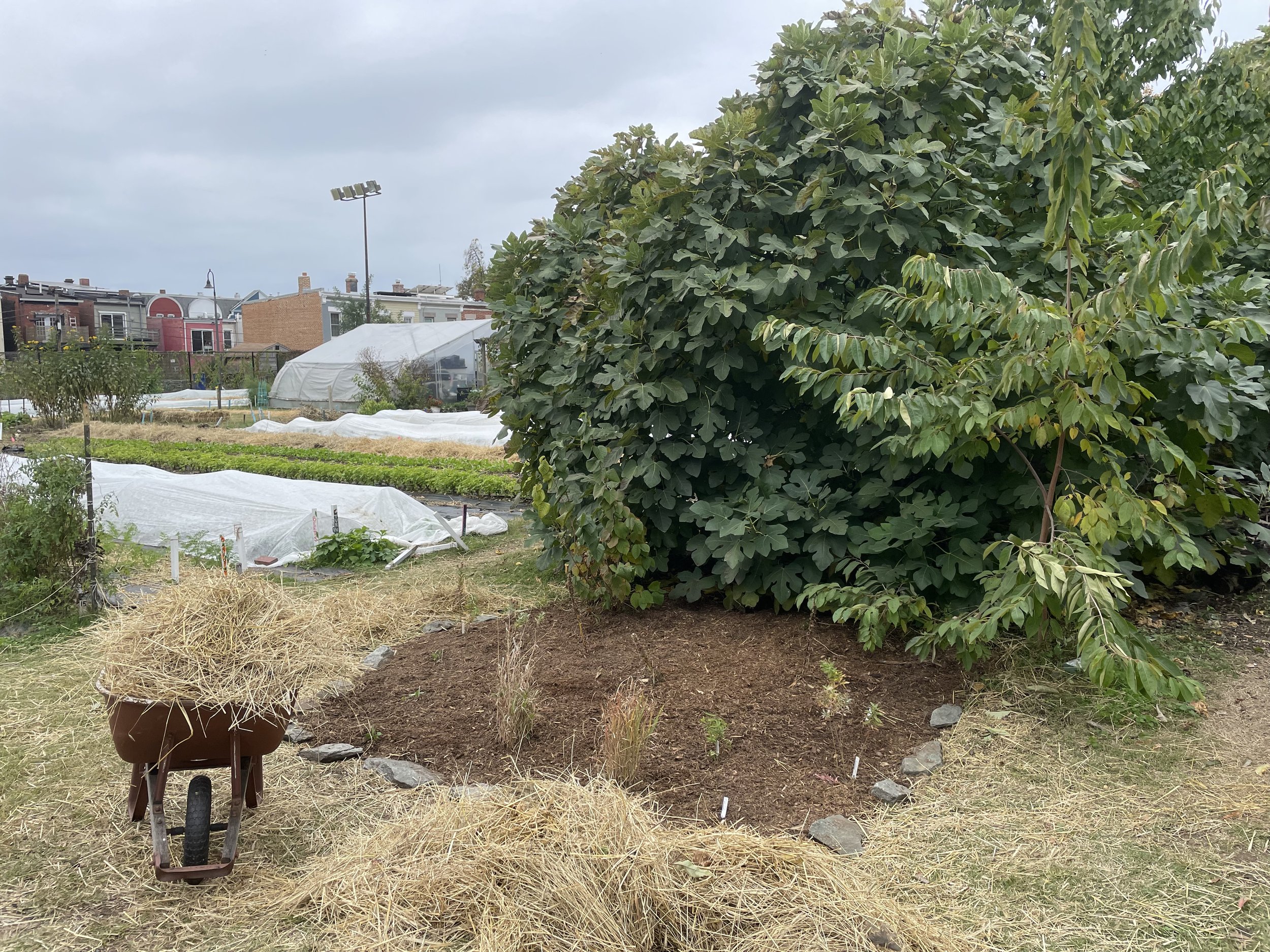Certificate Program in Regenerative Agriculture
This year we were able to expand our Regenerative Agriculture Certificate Program to more students and provided a stipend making the program more accessible. Cohorts went through a comprehensive 8-month program using concepts to create and implement new ideas for the compost, experimenting with companion planting, installing irrigation systems, managing soil remediation, and developing pest and disease regimens within each area of the farm.
Students utilized the knowledge granted through this course to create their own projects based on their interests. This program also inspired some students to take on new personal endeavors to further their studies in regards to the work that goes into sustainable food production.
Companion Planting
In this group project students experimented with companion planting, also known as intercropping, which is a method of growing particular plants next to others to help them thrive. Another benefit from this planting method is that you can maximize your space, an approach especially favored by small-scale growers. Below are some images of what they grew : radishes, cilantro, and spinach.
Irrigation System Prep
One group opted for a small, contained, aerated fountain that would be surrounded by native perennial plants. They assessed a few spots on the farm and settled on a patch in the northeast corner, on the edge of the orchard, where there had previously been a small bed. The space had good sun exposure and was in between the primary crop beds and other perennial plants. Reinstalling a bed there would help connect the two and, by extending the bed into the wide adjacent walkway, could add to the limited growing space on the farm.
Students marked and measured the new bed and developed a simple layout of 6 different native, perennial plants, with the fountain at the center. They researched and selected plants that were well suited to the near-full sun exposure, that could handle various moisture conditions without much input, and that would grow to fill up the space. While it was still somewhat warm in early autumn when they started, it would soon be cooling off, so students worked with Foster who sourced mature seedlings to improve their chance of returning in the spring, including:
4 New England asters
4 rough stemmed goldenrod
3 kobold blazing stars
6 Shenandoah switchgrass
5 brown-eyed susans
2 butterfly weeds
Garden Plan
Huge Thanks!
A big thank you to all of the students for their effort and contributions to the farm! We look forward to continuing this work.
We will be recruiting two more cohorts early 2023, be on lookout for application opening!






